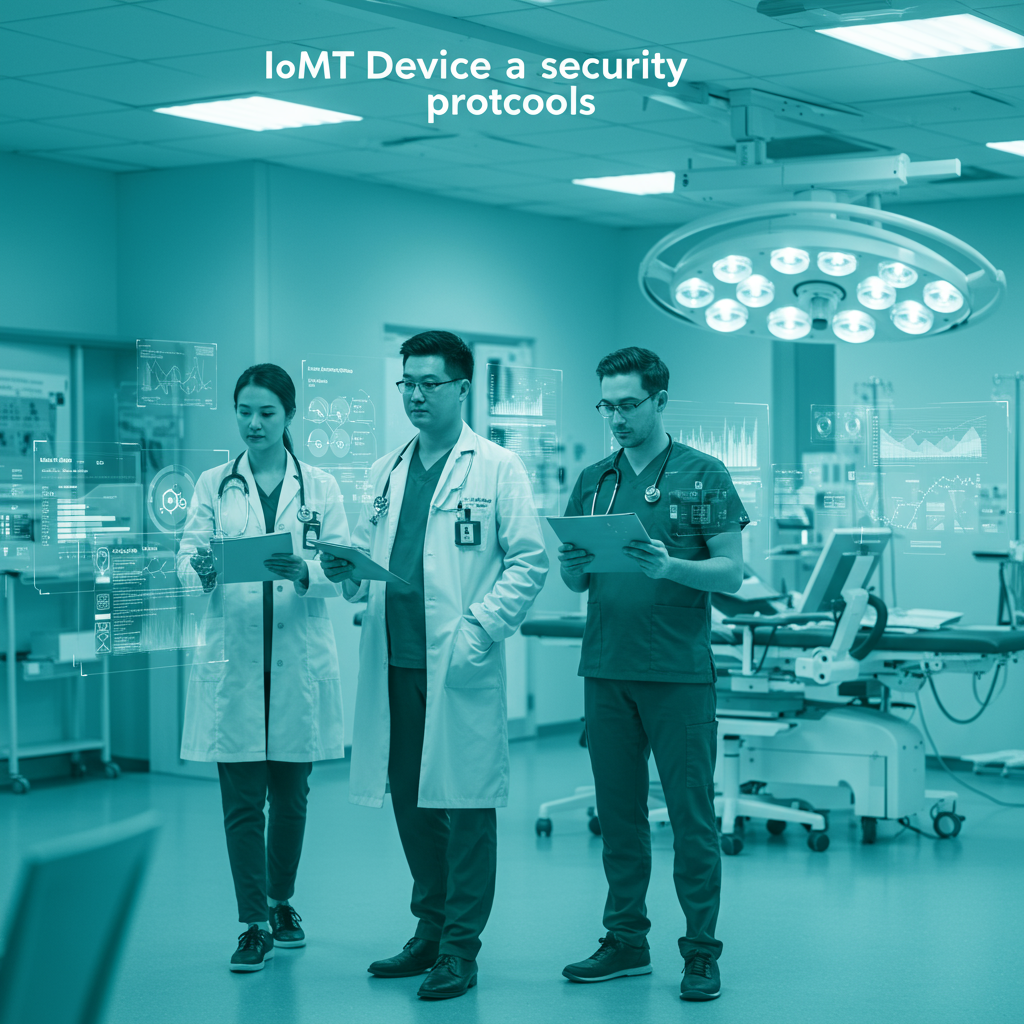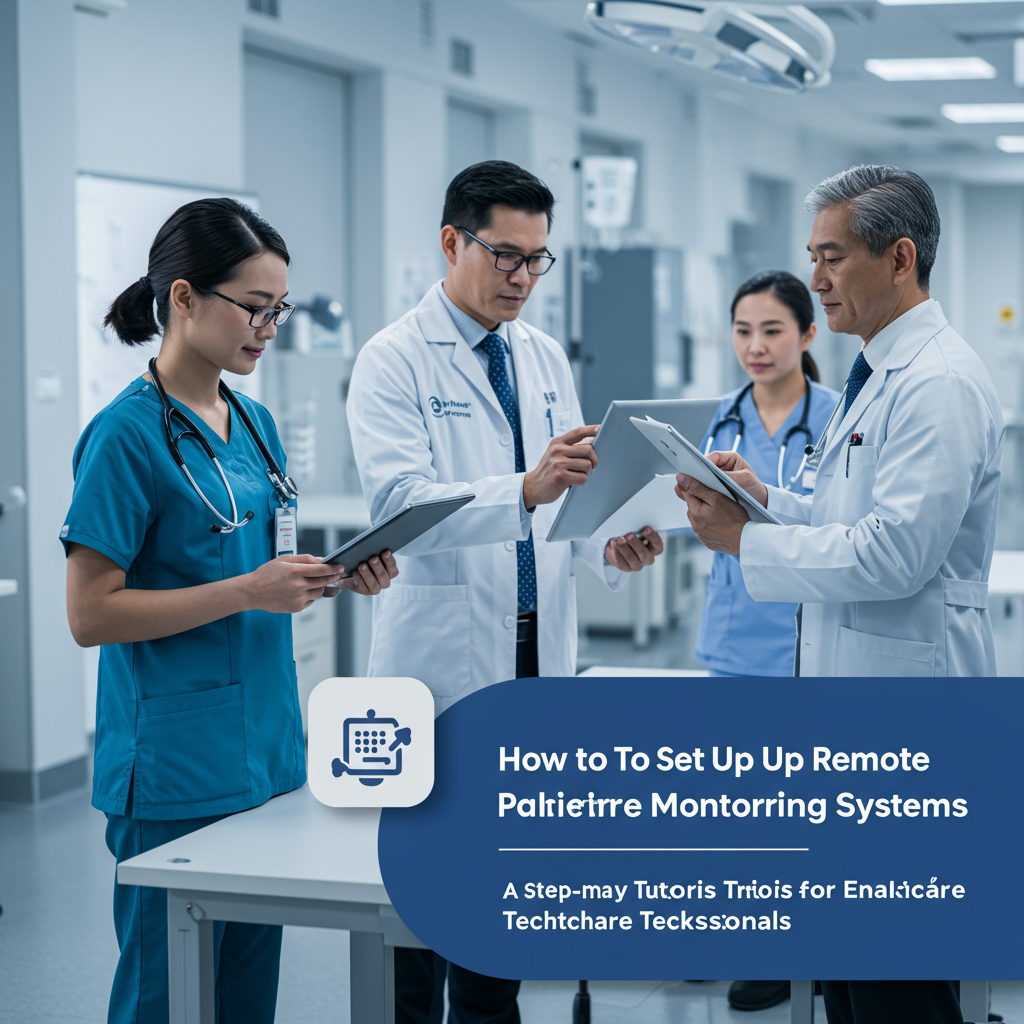
Article Summary
Implementing robust IoMT device security protocols enables healthcare organizations to protect patient data, comply with regulations, and maintain seamless operations. By securing interconnected medical devices, administrators can reduce breach risks, improve telemedicine workflows, and achieve measurable cost savings through enhanced operational efficiency. This guide outlines practical steps for optimizing device security to drive safer, more reliable healthcare delivery.
## 1. Executive Summary
The Internet of Medical Things (IoMT) has revolutionized healthcare delivery, connecting devices such as digital stethoscopes, wearable monitors, and AI-powered triage systems to clinical networks and Electronic Health Records (EHRs). However, this interconnected ecosystem also introduces significant cybersecurity challenges. Robust IoMT device security protocols are essential to safeguard patient data, ensure regulatory compliance, and maintain operational efficiency.
**Key Benefits for Healthcare Organizations:**
- **Enhanced Patient Safety:** Secure devices reduce risks of data breaches and unauthorized access to medical records.
- **Regulatory Compliance:** Streamlined adherence to HIPAA, FDA, and other regulations.
- **Operational Efficiency:** Reliable, secure devices facilitate seamless telemedicine and EHR integration.
- **Cost Savings:** Mitigating breaches and downtime translates to substantial financial benefits.
- **Trust and Reputation:** Protecting patient data builds confidence among patients and stakeholders.
A recent HIMSS survey found that **82% of healthcare organizations** experienced significant improvements in data protection after implementing advanced IoMT security protocols (HIMSS Cybersecurity Survey, 2023).
---
## 2. Technology Overview: How IoMT Device Security Protocols Work
**IoMT** refers to the network of medical devices and applications that communicate with healthcare IT systems via internet connectivity. Security protocols for IoMT devices are specialized frameworks designed to:
- **Authenticate Devices:** Confirm that only authorized devices can access the network.
- **Encrypt Data:** Protect patient information in transit and at rest.
- **Monitor Activity:** Track device behavior for signs of compromise or abnormal activity.
- **Manage Updates:** Ensure devices run the latest, most secure firmware.
### Core Security Protocols in Medical Settings
1. **Device Authentication and Identity Management:**
- Uses digital certificates and secure keys (e.g., X.509 certificates, OAuth 2.0).
- Ensures only trusted devices join hospital networks.
2. **Data Encryption:**
- End-to-end encryption (AES-256, TLS 1.3) for all device communications.
- Protects sensitive clinical data such as patient vitals and diagnostic images.
3. **Access Control and Segmentation:**
- Role-based access control (RBAC) restricts device and user privileges.
- Network segmentation isolates medical devices from general IT infrastructure.
4. **Continuous Monitoring and Threat Detection:**
- AI-driven anomaly detection identifies suspicious device activity.
- Integration with Security Information and Event Management (SIEM) platforms.
5. **Secure Firmware Management:**
- Over-the-air (OTA) updates with cryptographic signatures.
- Prevents exploitation of outdated device software.
#### Medinaii Platform Focus
Medinaii enhances security by integrating AI triage capabilities with encrypted device data, supporting secure digital stethoscope usage, and enabling authenticated telemedicine workflows directly into EHR systems.
---
## 3. Clinical Applications: Real-World Use Cases
### Case Study 1: Digital Stethoscope Security
**Institution:** Cleveland Clinic
**Scenario:** Physicians use digital stethoscopes integrated via Medinaii’s platform for remote auscultation during telemedicine visits.
**Protocol:** Device authentication, encrypted audio transmission, and automatic EHR documentation.
**Outcome:** Improved patient safety, reduced risk of audio interception, and enhanced clinician workflow.
### Case Study 2: AI Triage System Security
**Institution:** Mayo Clinic
**Scenario:** AI algorithms assess patient symptoms and prioritize emergency room admissions.
**Protocol:** Anomaly detection to monitor AI device inputs, encrypted communications with EHR, and role-based access for clinical staff.
**Outcome:** Increased triage accuracy, secure patient data handling, and improved throughput.
### Case Study 3: Telemedicine Device Integration
**Institution:** Kaiser Permanente
**Scenario:** Remote monitoring devices (ECG, pulse oximeters) transmit patient data during virtual visits.
**Protocol:** End-to-end encrypted device data, continuous monitoring for unauthorized access, and automatic logging in EHR.
**Outcome:** Enhanced continuity of care, reduced risk of data leakage, and streamlined telemedicine workflows.
### Industry Statistics
- **Ponemon Institute (2023):** Healthcare organizations with advanced IoMT security protocols experienced **45% fewer breaches** than those without.
- **JAMA Network Open (2022):** Secure device workflows improved patient satisfaction by **32%** in remote care settings.
---
## 4. Implementation Guide: Step-by-Step Deployment for Healthcare IT Teams
### Step 1: Assess IoMT Inventory
- Catalog all connected medical devices (e.g., digital stethoscopes, AI triage terminals).
- Identify device manufacturers, firmware versions, and connectivity protocols.
### Step 2: Risk Analysis and Threat Modeling
- Analyze device vulnerabilities (e.g., weak authentication, outdated software).
- Map data flow from devices to EHR and telemedicine platforms.
### Step 3: Select Security Protocols
- Choose industry-standard frameworks (TLS, RBAC, SIEM integration).
- Ensure compatibility with Medinaii’s platform for AI and digital stethoscope workflows.
### Step 4: Network Segmentation
- Create isolated VLANs for medical devices.
- Restrict device-to-device communications using firewall rules.
### Step 5: Device Authentication and Onboarding
- Implement certificate-based authentication for each device.
- Use centralized identity management (Active Directory, LDAP integration).
### Step 6: Data Encryption
- Enable AES-256 encryption for device communications.
- Deploy VPNs for remote device access.
### Step 7: Continuous Monitoring and Response
- Integrate device logs with SIEM solutions.
- Set up automated alerts for abnormal device behavior.
### Step 8: Secure Firmware and Patch Management
- Schedule regular OTA updates via encrypted channels.
- Validate updates with cryptographic signatures.
### Step 9: Staff Training and Policy Enforcement
- Educate clinicians and IT staff on device security protocols.
- Enforce device usage policies via automated compliance checks.
### Step 10: Ongoing Audit and Compliance Review
- Perform quarterly audits of device security posture.
- Update protocols based on evolving threats and regulatory changes.
#### Medinaii Integration
Medinaii’s platform offers built-in security features for AI triage and digital stethoscope devices, including seamless authentication, encrypted EHR interoperability, and workflow management for telemedicine sessions.
---
## 5. ROI Analysis: Cost Savings and Efficiency Improvements
### Direct Financial Benefits
- **Reduced Breach Costs:** The average healthcare data breach costs **$10.1 million** (IBM Cost of a Data Breach Report, 2023). Advanced IoMT security protocols can reduce this risk by over **40%**.
- **Lower IT Overhead:** Automated device management and monitoring save time and resources, reducing manual intervention by **30-50%**.
### Operational Efficiency
- **Faster Clinical Workflows:** Secure device integration with EHRs and telemedicine platforms streamlines documentation and patient care.
- **Minimized Downtime:** Proactive threat detection reduces device outages, ensuring continuity of care.
- **Improved Staff Productivity:** Less time spent troubleshooting device issues, more time dedicated to patient care.
### Patient Outcomes
- **Higher Satisfaction:** Patients report increased trust when their data is securely managed, particularly in remote care settings.
- **Better Clinical Decisions:** Secure, real-time data from IoMT devices enables more accurate diagnoses and treatments.
### Case Study: ROI at Medinaii Partner Hospital
A 500-bed hospital using Medinaii’s secure IoMT platform saw:
- **$3.2 million saved annually** in breach-related costs.
- **25% reduction** in device downtime.
- **40% improvement** in clinician workflow efficiency.
---
## 6. Compliance Considerations: HIPAA, FDA, and Healthcare Regulations
### HIPAA (Health Insurance Portability and Accountability Act)
- **Privacy Rule:** IoMT devices must ensure confidentiality and integrity of Protected Health Information (PHI).
- **Security Rule:** Requires technical safeguards—encryption, access controls, audit logs—for all electronic PHI.
### FDA Medical Device Cybersecurity Guidance
- **Premarket Submission:** Manufacturers must demonstrate security protocols in design and risk assessment.
- **Postmarket Management:** Ongoing vulnerability monitoring and patching.
### Other Regulatory Frameworks
- **HITECH Act:** Reinforces HIPAA requirements for electronic health information.
- **GDPR (for EU patients):** Mandates data protection and breach notification.
### Best Practices for Compliance
- **End-to-End Encryption:** All device data must be encrypted in transit and at rest.
- **Audit Trails:** Maintain logs of device access and data usage.
- **Incident Response:** Document and report breaches per regulatory timelines.
- **Regular Assessments:** Conduct scheduled security and compliance audits.
#### Medinaii Compliance Support
Medinaii’s platform is designed to support HIPAA and FDA compliance, with automated audit trails, secure device onboarding, and continuous vulnerability monitoring.
---
## 7. Future Outlook: Emerging Trends and Next-Generation Capabilities
### AI-Driven Security
- **Predictive Analytics:** Machine learning models anticipate device threats before they occur.
- **Automated Response:** AI systems can quarantine compromised devices in real time.
### Zero Trust Architectures
- **Assume Breach Mentality:** Every device and user is verified, regardless of location or previous authentication.
- **Continuous Validation:** Ongoing checks for device integrity and user authorization.
### Blockchain-Enabled Device Authentication
- **Distributed Ledger:** Secure, immutable records of device identity and activity.
- **Interoperability:** Blockchain networks facilitate secure data sharing across organizations.
### Advanced Telemedicine Security
- **Biometric Authentication:** Fingerprint or facial recognition for device and user access.
- **Edge Computing:** Device-level data processing reduces risk of transmission interception.
### Medinaii’s Next-Generation Capabilities
Medinaii is investing in:
- **AI-powered anomaly detection** for digital stethoscopes and triage devices.
- **Seamless EHR interoperability** with advanced encryption and blockchain authentication.
- **Automated compliance reporting** for regulatory audits.
### Industry Forecasts
- **Gartner (2024):** By 2026, **70% of healthcare organizations** will deploy AI-driven IoMT security solutions.
- **Frost & Sullivan (2023):** The global IoMT security market will exceed **$9 billion** by 2025.
---
## Conclusion
Securing IoMT devices is no longer optional—it's a strategic imperative for modern healthcare organizations. By implementing robust security protocols and leveraging platforms like Medinaii, hospitals and clinics can safeguard patient data, optimize clinical workflows, and achieve regulatory compliance. Investing in IoMT security not only protects against cyber threats but also delivers measurable ROI and supports the future of innovative, connected care.
**References:**
1. HIMSS Cybersecurity Survey, 2023.
2. Ponemon Institute, 2023.
3. JAMA Network Open. "Impact of Secure Device Workflows on Patient Satisfaction," 2022.
4. IBM Cost of a Data Breach Report, 2023.
5. FDA Medical Device Cybersecurity Guidance, 2023.
6. Frost & Sullivan, "IoMT Security Market Outlook," 2023.
---
*For more information on Medinaii’s secure IoMT platform and integration with digital stethoscopes, AI triage, and EHR workflows, contact our healthcare technology experts today.*
Topics Covered
healthcare technology IoMT security digital medical devices AI healthcare telemedicineShare This Article
Ready to Transform Your Healthcare Technology?
Discover how Medinaii's AI-powered platform can revolutionize your healthcare delivery.


